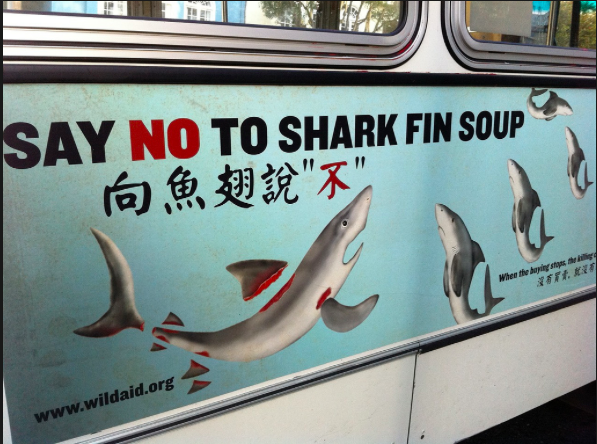Column: Sharks are not the mindless killers they are portrayed to be

September 27, 2018
Imagine going to Florida with your family for vacation. You decide to go to the beach for a swim. When you get there, the water is green, filled with slimy algae. Dead fish float on the surface of the water everywhere. This is what an ocean without sharks would look like.
The media and blockbuster movies, like “Jaws,” paint sharks as mindless creatures that devour everything in their path, making us scared to enter the water, afraid of what is lurking beneath.
Our view of sharks needs to change. We need to understand that sharks do more good than bad. Although researchers at Stanford University can’t predict it with absolute certainty, they suspect, according to a 2010 study, that declines of shark populations could have significant negative impacts on marine ecosystems. This is due to large sharks’ predominant role as a top predator — without sharks, the population of predatory fish that sharks typically eat increases, and the number of fish that eat algae declines.
Without those fish to keep the ecosystem balanced, algae may grow rapidly, giving coral reefs no chance to fight against bleaching or other disturbances. Another study done in 2013 by Fauna and Flora shows that shark tourism brings in $314,000 per year and supports over 10,000 jobs.
Humans see sharks as killing machines. What we don’t always see is who is actually doing the most killing. Humans are responsible for over 100 million shark deaths each year, according to Sea Shepherd Global. In 2017, five fatalities due to unprovoked shark attacks occurred, according to The University of Florida International Shark Attack File.The odds of dying from a shark attack are one in 3,748,067. The odds of dying from a shark attack are one in 3,748,067.
You have a better chance of being killed by mosquitos, dogs, cows or in a car accident. Sharks are the least of your worries when swimming in the ocean.
Shark finning is the main killer of shark populations, with 10,000 being killed per hour at $450 a fin. Shark fins are typically used to make a soup illegally sold at restaurants around the world. If a shark isn’t constantly moving it will die, so slicing off their fins and throwing them back in the water leads to a slow, suffocating death. The animals’ slow reproductive systems won’t be able to keep up with the finning demands much longer. Since it takes about 12 years for the shark to reach sexual maturity and 22 months for the shark to give birth to very few pups, populations are on a rapid decline. According to Oxford University Press, some populations have gone down 87 percent in the last 20 years. Out of 420 shark species, 143 of those are critically endangered and 210 are data deficient or threatened. Less than a quarter of the known shark species is under no immediate threat. Sharks have been around for more than 400 million years, and we are on our way to wiping them out completely.
You are probably thinking ‘What can I do to help sharks? I live in Kansas.’ The shark fin trade is even a problem here, thousands of miles away from an ocean. According to the Animal Welfare Institute, there are two restaurants that serve shark fin soup in our area: Pine and Bamboo Garden and Bo Lings. The image of fishermen cutting off shark fins while the animal is conscious might make the food served here seem less appetizing.
Avoiding eating at those places and signing or starting petitions are all things you can do to help.
Visit this link to help ban the shark fin trade in the U.S.









